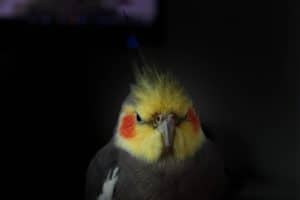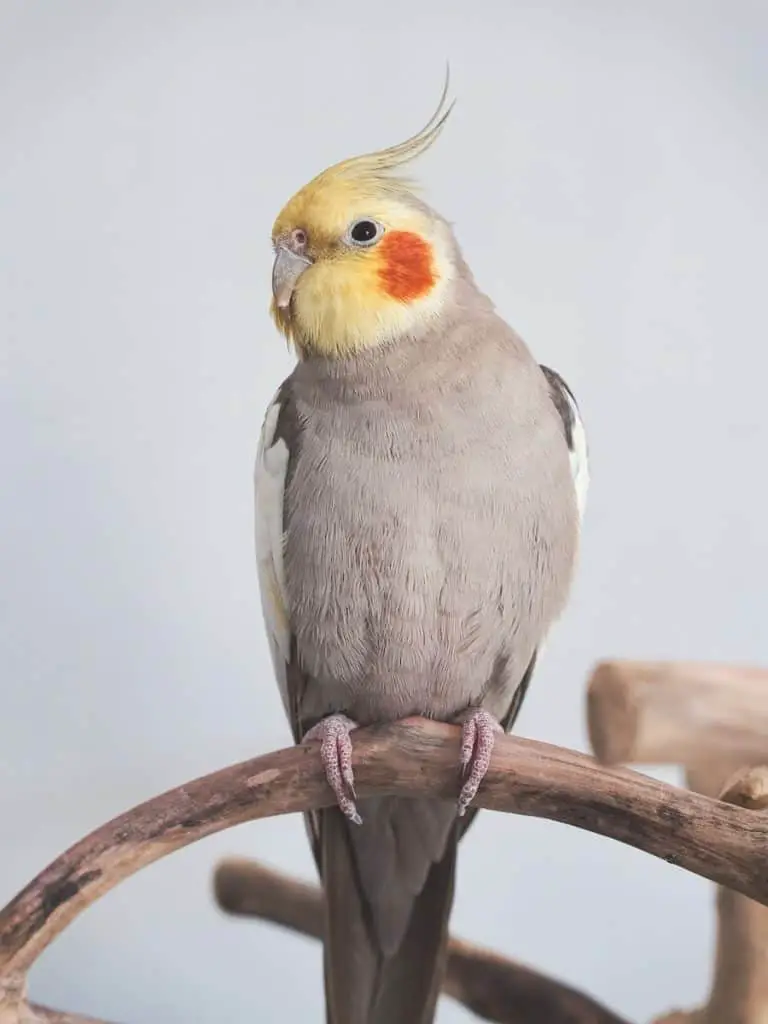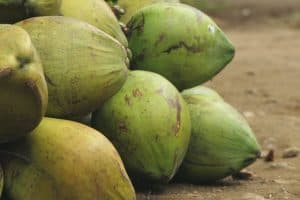The bronzefallow cockatiel is a native member of the Australian cockatoo family with a friendly nature. These birds are highly valued as family pets and companions all throughout the world and are quite simple to breed. The popular caged bird is available in 22 color variations across the world today.
Today, we’re discussing the beautiful bronzefallow mutation of cockatiels. You’ll learn more about their lifespan, temperament, traits and price – as well as other things you should know before getting one for yourself.
A fallow mutation is a genetic variation in certain species of birds, including cockatiels, that results in a pale or dilute coloration of the feathers. The fallow mutation is characterized by a lightening of the normal grey coloration, resulting in a pale, sandy or beige hue. The eyes of fallow cockatiels are red, rather than the dark brown of normal cockatiels. Fallow mutations are an example of a sex-linked recessive mutation, meaning that it is passed down through the genes on the sex chromosomes and can only be expressed in birds that have two copies of the gene, one inherited from each parent.

Bronzefallow Cockatiel: What Makes Them Different?
Cockatiels’ extraordinary characteristics may be seen in the variety of beautiful color mutations and other mutations that have occurred throughout the years. The normal grey was the first, and subsequent matings produced lutinos, pieds, cinnamon lutino, and pearlies. Fallows are a pale fallow cinnamon-color with a bright yellow to their face, glowing red eyes, and legs.
A Cinnamon Lutino is a specific color variation of the cockatiel, a species of parrot native to Australia.
The term “Cinnamon” refers to a specific color mutation that results in a reddish-brown coloration of the feathers, while “Lutino” refers to another color mutation that results in a yellow coloration of the feathers.
When a cockatiel carries both the Cinnamon and Lutino genes, it results in a bird with a reddish-brown body, and yellow on the face, crest, and the edges of the wings and tail feathers. They also have red eyes. This coloration is a recessive mutation and is considered as a rare one.
- Bird Baths: suitable for Crested Starlings, bird baths are suitable for small birds, budgies, lovebirds, conures, finch canaries, small parrots and parakeets, etc.
- High-quality material The bird-shaped bathtub is made of transparent acrylic material, which has good transparency, toughness and lightness, strong, non-toxic, long-lasting, and no strange plastic/chemical smell.
- Easy to install There are two hooks in both directions. You can install the hooks in two positions to hang on the inside or outside of the cage. It is very convenient to use.
- Can provide a good small bathtub for your bird to help keep your bird clean and healthy
- Size; suitable for small and medium-sized parrots-please check the size carefully before buying, the small size is 5.1x5.1x4.3inches, the large size is: 6.3*6.3*6.3 inches
It is important to note that most of the time, cockatiels color variations are a result of selective breeding and not found in wild populations.
The bronzefallow cockatiel mutation is from the United States and started showing up around 1970. One of the most noticeable indicators that a bird is this particular type is its bright red eyes. When they hatch, all cockatiels and other pet birds have pink eyes which then either darken as they age or stay light pink. Their feathers can be any color from Lutino to soft caramel with yellow mask, chest with yellow wash and yellow cheeks.
A female fallow is more attractive than its male counterpart, owing to the unique coloration of their feathers. The female has a less bright chest and face, as well as a paler yellow head and whole body. Males tend have a lighter tone (sometimes with orange cheeks) when they are younger but become darker with age. With flesh-colored toenails, the feet and beak are light toned.

Does a Bronzefallow Cockatiel have a yellow mask?
A bronzefallow cockatiel with a yellow mask is a variation of the bronzefallow cockatiel, which is a color mutation of the cockatiel, a species of parrot native to Australia.
This variation of the bronze fallow cockatiel is characterized by a brownish-bronze coloration of the plumage, with some yellow or white markings. The face of the bird is a bright yellow color, which is referred to as the “mask.” This yellow coloration is most prominent around the bird’s red eyes and cheeks, giving the appearance of a mask. The crest, cheeks and underwing are also yellow.
The wings and tail feathers are a dark brownish-bronze color, with a yellowish-white edge on the feathers. The bird’s chest and belly are a light brownish-bronze color, and the legs and feet are a grayish color.
What is the difference between a Yellow Mask and Yellow Wash Bronzefallow Cockatiel?
A yellow mask (sometimes called a Yellow Face) refers to a brightly colored yellow patch on the face of the cockatiel, typically around the red eyes and cheeks. This yellow coloration is usually very distinct and well-defined, giving the appearance of a mask.
On the other hand, a yellow wash refers to a more subtle and dispersed yellow coloration on the cockatiel’s plumage. It might be present on the head, lighter chest, and other parts of the body, creating a more diffuse and less distinct yellow coloration. The yellow coloration is not as vibrant as the yellow mask and it’s not as defined.
A simple way to think about it is that a yellow face is a distinct, bright yellow patch on the face, while a yellow wash refers to a more subtle, dispersed yellow coloration on the body.
Bronzefallow Cockatiel Price
Cockatiels deemed as stunning bronze fallow mutation are rather easy to locate at pet stores or adoption centers, depending on where you reside. The price for this bird varies based upon region; they are typically sold at a lower rate in Australia due to the abundance of cockatiels present in the country. Because there is an oversaturation of these birds, sellers and breeders face fewer restrictions/requirements, driving the cost down below that of most other animals.
A bronzefallow cockatiel can cost anywhere from $120 to $180, depending on your location and the bird’s age, breed, temperament, and health. Once a cockatiel has weaned and is prepared to transition to a new setting, this is the best time to capture it. However, this is the age when they are most pricey; regardless of gender or condition.
Bronzefallow Cockatiel Lifespan

Cockatiels have a lifespan of up to 25 years when kept in captivity, according to the American Cockatiel Association.
In the wild, cockatiels typically live for 10-14 years but can live up to 25 years when captured. If cared for properly, a pet golden fallow cockatiel may live up to 30-32 years in captivity. The oldest known specimen lived 36 years old. To stay healthy and active, the bird require a nutritious diet and regular exercise. To prevent them from becoming bored, you should also give them some engaging interactive toys, games, and activities.
Though seemingly healthy, these cockatiels are prone to some infections and health issues. They can suffer from enlarged livers, respiratory problems, itchiness, diarrhea, fatty liver disease, candida overgrowth , and reproductive issues. Thus, you must be vigilant for signs of illness in your pet birds. In addition to being messy – shedding feathers and throwing food around – they also defecate frequently, making it necessary to clean them, their toys, and their cage every day. This helps reduce bacterial growth and keep them healthy and happy.
What Do You Need To Know About Bronzefallow Cockatiel Temperament?
The bronzefallow cockatiel is a good pet bird choice as it is gentle, playful, loving, and affectionate. It is also intelligent and can learn some basic tricks if trained properly with rewards such as treats. Some of the tricks this cockatiel can perform include climbing a ladder, ringing a bell, and hopping on the finger when it is time to get out of the cage.
Both male and female fallows look quite alike, but males typically vocalize more than their female counterparts. Additionally, females tend to be a little more aggressive in nature. If you observe carefully, many times males will seem restless–constantly moving around on their perches or within the cage–whereas other parrots don’t demonstrate this behavior as much. Cockatiels can learn to whistle if given enough training, however they aren’t known for being particularly loud birds overall.
- COCKATIEL FOOD: Large variety of seeds, grains and vegetables in every bowl to provide the balanced variety of nutrients that cockatiels need with great taste theyll love.
- ADVANCED NUTRITION: Contains vitamins, minerals and Omega-3 fatty acids to support healthy skin and shiny feathers.
- IMPORTANT VARIETY: Unique mix of millet, oat groats, safflower seeds, sunflower seeds, cracked corn, peanuts and more creates an irresistible blend to replicate diets found in a natural habitat and encourage foraging behaviors.
- DAILY DIET: Feed cockatiels 2 to 4 tablespoons daily per bird.
- WILD HARVEST BRAND: Offers a full assortment of nutritional and interactive engagement products.
Best Treats & Foods For Bronzefallow Cockatiels
A healthy diet for a pet bronze fallow cockatiel should include seeds, fruits, vegetables, and fresh water. In the wilds, these birds would scavenge for various types of grass seeds, berries, fruits, and other edible vegetation. When you’re feeding your pet bird at home though, you should give them a mix of seeds and pellets as they are often more nutritious than what is found in the wild.
A healthy diet for your cockatiel pet bird species should consist of around 70-80 percent pellets, with the remaining 20-30 percent coming from fruits and vegetables. When it comes to treats, you can give your cockatiel some human food like egg and lean meat occasionally. However, be careful about what you feed them as some foods like avocado, chocolate, and caffeine can be toxic to birds.
- EASY TO USEEasily hooks on to cage for convenient use.
- MATERIALAdopting the natural calcium stone, non-toxic and no harmless.
- SAFE AND HEALTHYCompletely safe to chew and promotes clean and healthy teeth.
- FUN TO REST AND GRINDCan be arbitrarily placed in cages, your little pets will gnaw by themselves.
- COLORFUL DESIGNVibrant colors can better attract the attention of birds, prevent parrots from getting depressed and yelling or biting.
Bronzefallow Cockatiel: What Makes Them Different?
The bronzefallow cockatiel is a wonderful choice for a family pet due to its amiable disposition, tiny size, and charming personality. They are simple to maintain, but they require regular handling and attention from family members and other bird pets. We hope this information will help you learn more about this species of bird and what to anticipate when considering having one for your home.






